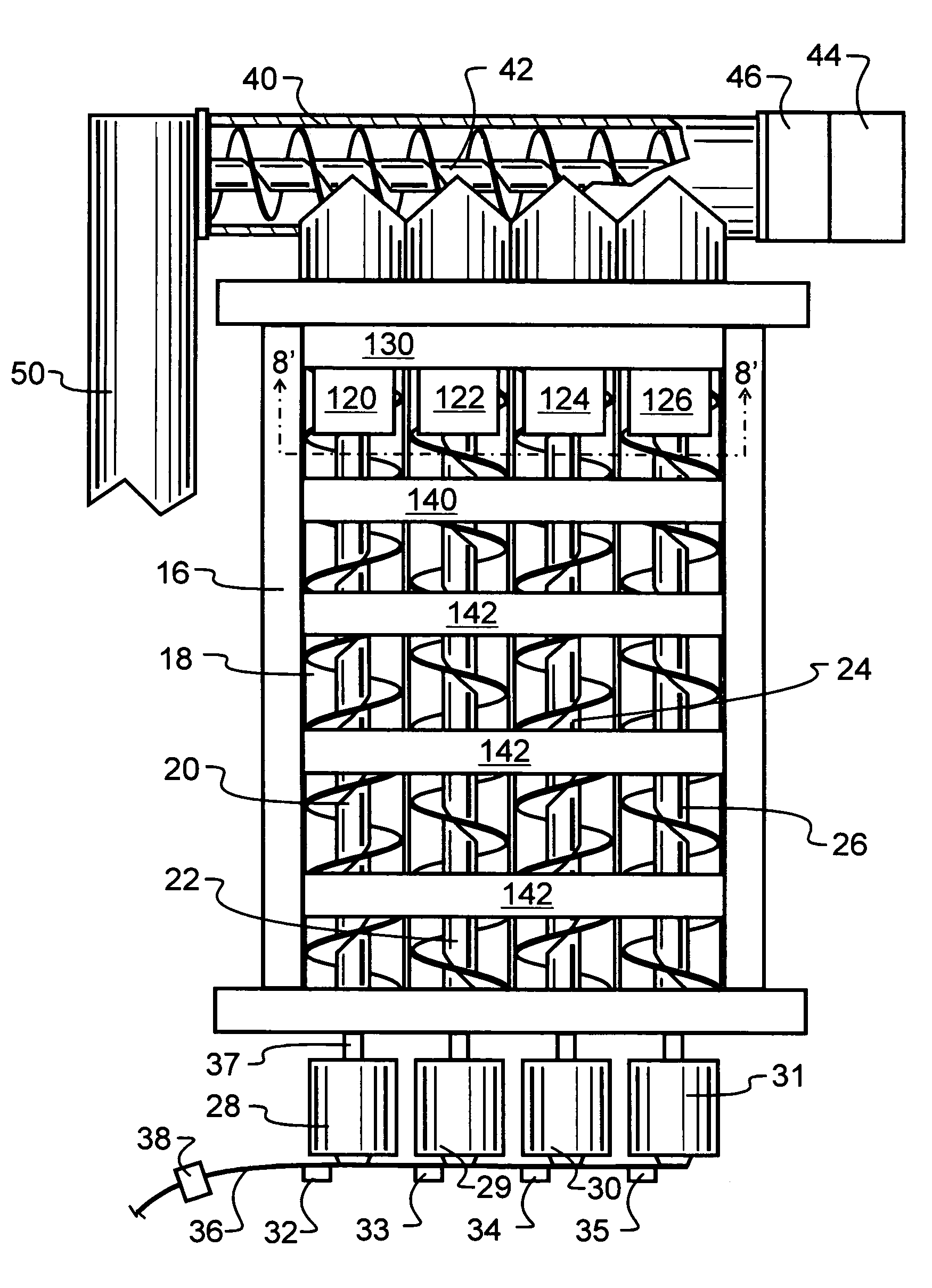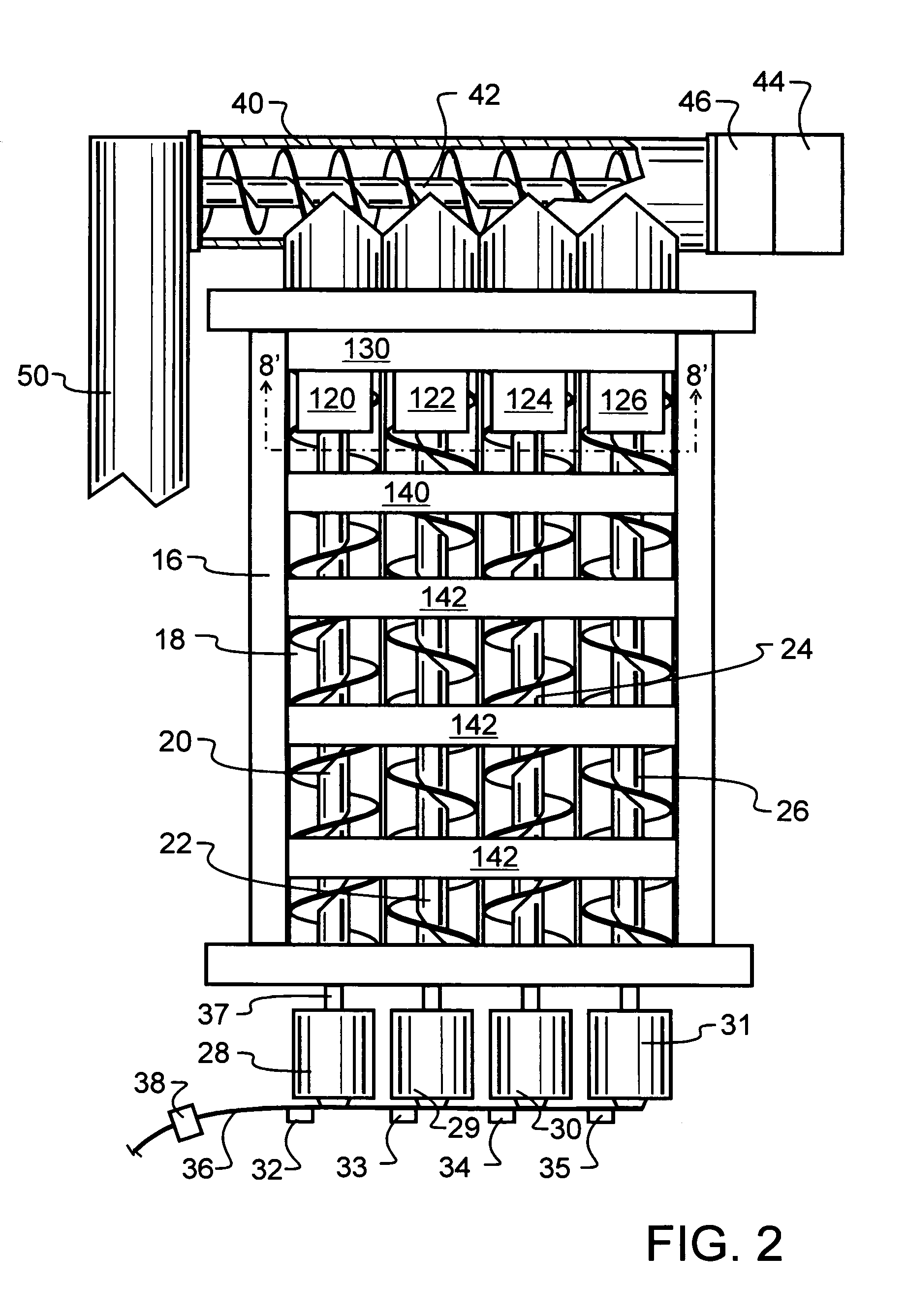Compacting apparatus
a technology of compacting apparatus and clamping rod, which is applied in the field of presses, can solve the problems of large amount of metal used in the fabrication process, small amount of waste in castings, and low priority of metal waste produced in most fabrication shops, and achieves the effects of convenient clearing of jams, high density, and more efficient and economical metal recycling
- Summary
- Abstract
- Description
- Claims
- Application Information
AI Technical Summary
Benefits of technology
Problems solved by technology
Method used
Image
Examples
Embodiment Construction
[0033]Manifested in the preferred embodiment, the present invention provides a compacting apparatus indicated generally at 10. Compacting apparatus 10 includes a supply hopper unit 12 and a compactor unit 14. The supply hopper unit 12 has a frame 16 that carries a supply bin 18. Supply bin 18 has an open top in order to receive scrap product such as metal shavings entrained with fluids such as cutting fluids. While the preferred embodiment has been optimized for use specifically with metal shavings and similar metal scrap produced during metal machining, those skilled in the art will recognize that the teachings provided herein could be applied to other scrap material as well, provided adequate consideration is given to the characteristics of such other material.
[0034]The bottom of the supply bin 18 is comprised of a plurality of spaced apart, parallel grinding augers, as visible in FIG. 2. Augers 20,22,24 and 26 are mounted to the frame 16 at the lower end thereof. Each auger is dr...
PUM
 Login to View More
Login to View More Abstract
Description
Claims
Application Information
 Login to View More
Login to View More - R&D
- Intellectual Property
- Life Sciences
- Materials
- Tech Scout
- Unparalleled Data Quality
- Higher Quality Content
- 60% Fewer Hallucinations
Browse by: Latest US Patents, China's latest patents, Technical Efficacy Thesaurus, Application Domain, Technology Topic, Popular Technical Reports.
© 2025 PatSnap. All rights reserved.Legal|Privacy policy|Modern Slavery Act Transparency Statement|Sitemap|About US| Contact US: help@patsnap.com



